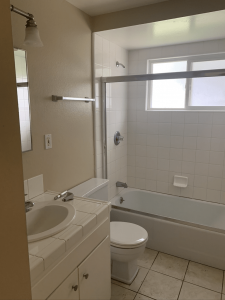Defining Flight-to-Quality Investments in Residential Real Estate
Flight-to-quality, also called flight-to-safety, is a common financial market phenomenon that describes the behavior when an investor sells a perceived high-risk asset during a financial downturn and switches to safer investments. In financial markets, investors may shift to blue-chip stocks and Treasuries because they seem relatively safer in the downturn.
Real estate, like the stock market, has its share of ups and downs. After a period of record highs, despite COVID-19 forcing the broader economy into a slump, real estate market fundamentals are resilient for now. Savvy real estate investors who employ next level thinking are already flocking to “quality” investments. They believe these safer assets and strategies will perform well through the challenging conditions.
Commercial real estate investments are classified into four different segments based on characteristics of the deal. We took a stab at creating the same categorization for residential real estate assets and deals.
Category 1: Core Investments
Core investments have the least perceived risk. First-time homebuyer properties with light rehab and within FHA limits fall into this category. We define a light rehab as a home that requires no reconfiguration just some simple cosmetic updates like paint, lighting and replacing plumbing fixtures.
A nice three-bedroom, two-bathroom home with a backyard in a thriving suburban location, with a good school district and low crime rates, that can be turned around in a short period of time with light rehab is a definite winner. A cul-de-sac location and a walking distance to the park are a nice cherry on top.
Category 2: Core-plus Asset Investments
Core-plus assets are similar to the core investments but add a “growth” component. All of the same definitions would apply, but the rehab is more extensive. For example, the floor plan of the home is already good but all of the finishes are outdated. You would apply a full cosmetic renovation with new flooring, paint, cabinets, tile etc., and add landscaping to better the curb appeal. The holding time is longer due to the prolonged construction timeline.
Before/After Example of Core-plus Asset Property


Here we kept the existing layout, but simply did a full cosmetic update with new tile, vanity, and lighting.
Category 3: Value-add Investments
Value-add investments offer tremendous return potential once the property’s physical and operational issues are improved. For example, you might have a three-bedroom, one-bathroom with a compartmentalized floor plan in a 1,200 square foot house. Reworking the floor plan to add a second bathroom to create a complete primary suite is one example. Additionally you want to look at the existing kitchen layout and figure out how to get the best layout possible by opening up a wall to make it feel more connected to other spaces in the house. The idea with the value-add rehab is that the cost of these dramatic changes will be seen on the back end when going to sell.
On the risk vs. return spectrum, value-add real estate assets hold a middle ground between the less risky (core or core-plus) and riskier (opportunistic) investment strategies because of the execution risk and longer time it takes to turn the property around.
Before / After Example of Value-Add Investment Property


Category 4: Opportunistic Investments
Opportunistic investments are the riskiest deal types that have much longer investment horizons and require major renovations. Examples of opportunistic deals are adding an ADU (Accessory Dwelling Unit), splitting a lot and building a second structure, or selling the land and expanding square footage. Opportunistic deals are highly speculative in nature, with big risk and big reward potential.
Location, Location, Location
In addition to the strategies outlined above, when real estate investors face a high level of uncertainty, geographic considerations play an important role in flight-to-quality. Investors will avoid properties with external obsolescences like busy roads, locations with commercial buildings, multifamily apartments, a landfill next to the neighborhood, high-voltage towers, proximity to or being in a river flood zone, or backing a highway or railroad tracks.
At this point in the market cycle, flight-to-quality means evaluating locations, intrinsic property characteristics, and strategy type. Core, core-plus, and value-add investments in solid geographic locations are the most safely positioned to weather the market storm.
Discover nationwide properties you won’t find elsewhere
Find, win, and close on exclusive and vetted investment properties.
